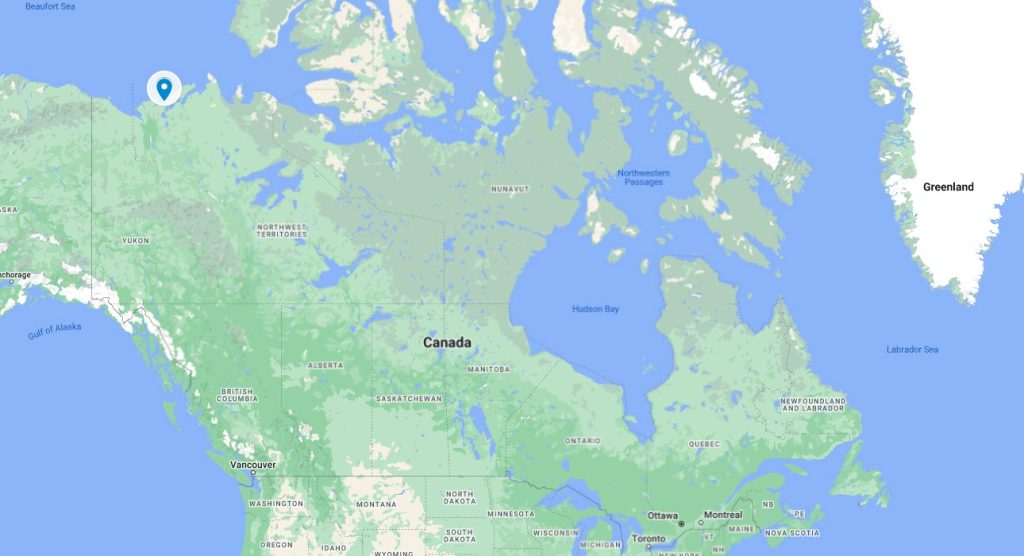Tesla Model Y makes it to the Arctic Ocean, the first EV to do so in dead of winter

Jonathan Zoes, an aspiring filmmaker, has become the first person to drive an electric vehicle to the Arctic Ocean in -40°C (-40°F) temperatures of an Arctic winter, and he did it in a Tesla Model Y. Zoes documented his journey driving through Canada to Tuktoyaktuk, relying on the help of strangers to plug in the vehicle once charging stations became harder to find.
In an interview with Northern News Services Limited, Zoes stated that finding charging stations was easy in the southern part of his drive. However, as he made his way to Dawson Creek in Northern British Columbia, he had to rely on RV parks to keep his vehicle charged.
The Yukon territory has been constructing fast charging stations at an impressive rate, even surpassing the adoption rate of electric vehicles among locals. Consequently, Zoes found most of the charging stations empty after passing Whitehorse.

Zoes couldn’t always rely on finding public chargers however. An Indigenous council in Profit River let him use their maintenance building for the night to charge up. To cross the Dempster Highway, which has no gas stations for more than 300 kilometres, he befriended road crews who let him use their garages. In Fort McPherson, he was able to get another charge from LJ’s Contracting. To travel the Inuvik-Tuktoyaktyuk Highway, he improvised a charging station.
By utilizing the Tesla mobile app Zoes calculates that he managed to save $463 in fuel expenses during his month-long journey to Inuvik. His only expenses were the costs for food and electric charges paid to his hosts. In comparison, covering the same distance with a gasoline-powered car would have set him back $701. Additionally, Zoes enjoyed the benefit of sleeping in the warmth of his car for most of the nights, except for one night spent in Eagle Plains.
Zoes stated that the technology works and will only get better and he hopes his trip helps to inspire others to take a chance on EVs and to push for more charging infrastructure in remote areas.
Study Reveals Falling Satisfaction With Home Charging Experience
Tesla's home charger ranks highest followed by
GRIZZL-E.

J.D. Power – the unofficial ranking organization of, well, everything – has released a new study that says while 68 percent of electric vehicle owners use a permanently installed Level 2 charger at home, their overall satisfaction with the experience has fallen year over year. These findings come from the 2023 Electric Vehicle Experience (EVX) Home Charging Study, which rates owner satisfaction with the many L2 chargers on the market in the US.
The study determined that satisfaction with home charging overall fell 12 points this year to 740 on a 1,000-point scale. The culprit? The rising cost of electricity due to inflation. Owners are also reportedly unhappy with home charging speeds, and for some reason J.D. Power doesn't explain, the model year of your EV may make a difference. The company says in its press release, "The 2023 study finds that owners of 2022 and 2023 model EVs are less satisfied with their home charging speed (605 and 597, respectively) than owners of 2021 model EVs (616) and 2020 model EVs (608)," which is surprising considering newer EVs usually have better charging technology, and therefore charging speeds, than older models.
This year's study measured home charger satisfaction for individual chargers in eight areas:
- Fairness of retail price
- Cord length
- Size of charger
- Ease of winding/storing cable
- Cost of charging
- Charging speed
- Ease of use
- Reliability
The highest rated L2 permanently mounted home charger is Tesla's own official charger, which scored 790 out of 1,000 points. The runner up comes from GRIZZL-E, which scored 757 points, and third place goes to Emporia with 754 points.
J.D. Power partnered with PlugShare to produce this year's study. PlugShare should be familiar to most EV owners, many of whom use the company's app to find available chargers and keep track of their experiences. The study included 13,860 owners of 2017-2023 model year EVs and plug-in hybrids and ran from December 2022 through February 2023.
Fortunately, J.D. Power does offer suggestions to increase your satisfaction with home charging if you find yourself down about it.
- Know your utility provider: It may offer a program for charging vehicles at home that include rebates or incentives, but you have to ask to find out.
- Schedule your charging: If your EV offers scheduling for charging, you can use it to charge during off-peak hours when electricity is cheaper.
- Location, location, location: Electricity costs are higher in some parts of the country than others. The study showed owners in New England are least satisfied, while residents in the East South Central region of the country are most satisfied.
- Upgrade to Level 2: The biggest increase of satisfaction with home charging will come when an owner upgrades from Level 1 to Level 2 charging. Satisfaction with charging speed jumps 373 points when this happens, according to the study.
Long-range EVs have big battery packs that can store a lot of energy, and it's not surprising some new owners are finding keeping their new car charged costs more than they expected. With the helpful tips above, though, an owner should be able to reduce this expense, and nothing can ever completely sour the experience of coming out in the morning every day to a completely charged car.
Source: J.D. Power

No comments:
Post a Comment